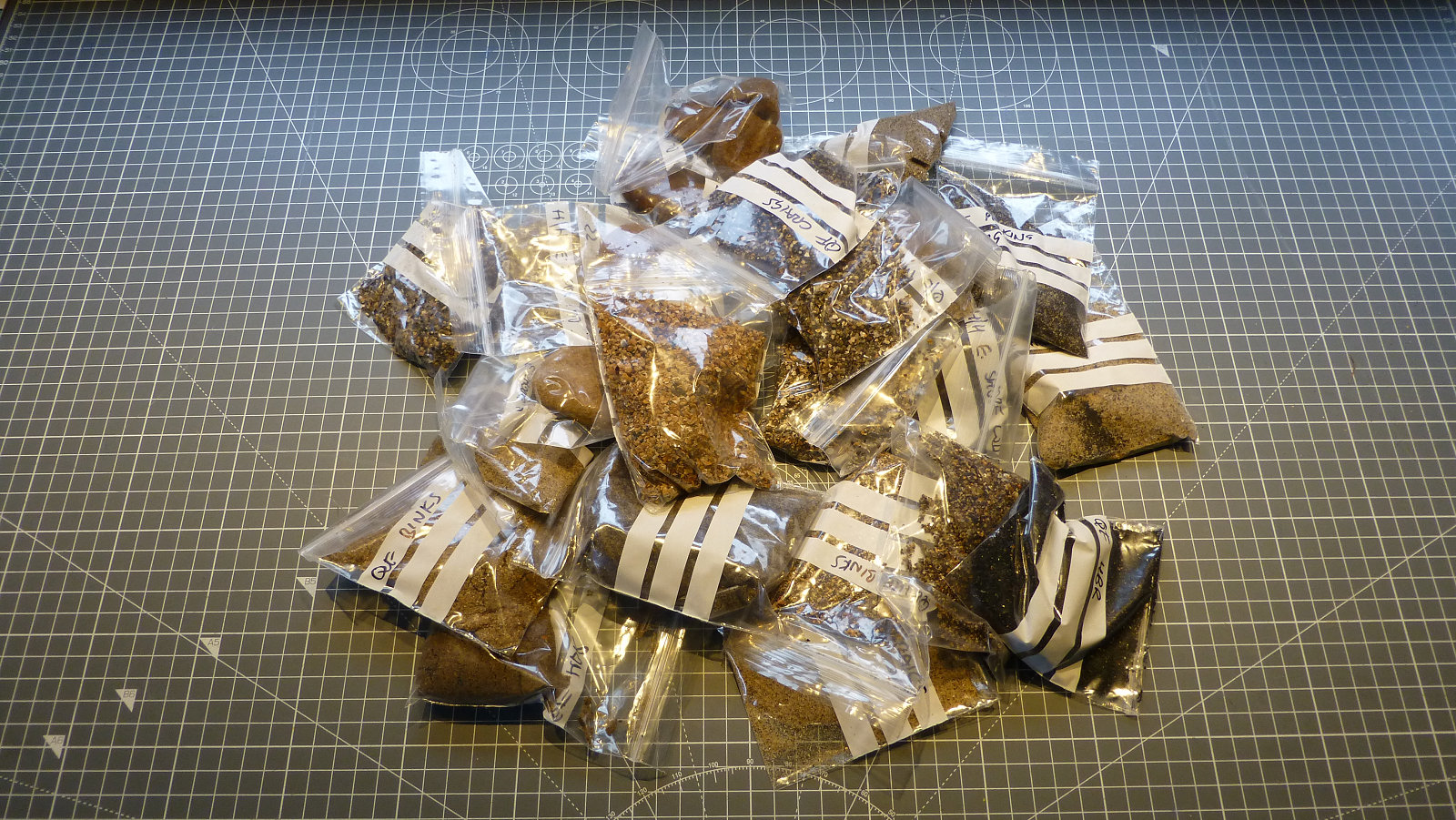A few simply hints and tips for sand collectors.
When collecting sand, collect more than you need for display. Even if you don’t plan to trade now, you may in the future.
A spoon makes the ideal tool for collecting sand. It also keeps your hands dry and clean. Clean it between samples to avoid cross-contamination.
If you want to sieve your sand, professional geological sieves can be expensive. Cheap alternatives are the sieves used by Bonsai and cacti growers.
Double-bagging your samples in the field will help contain spills from split bags or badly secured seals and also help prevent wet samples from leaking.
A greenhouse or conservatory is an ideal place to dry your samples, at least during the warmer months. Not only does it warm up quickly but it protects fine samples from blowing away in the wind.
Carry a mini collecting kit in your car, or anywhere else for that matter, comprising self-seal bags, spoon and labelling pen. Keep them all together in a small stuff sack. Useful at any time.
When out collecting, collect samples on the return part of the journey. Saves a lot of effort in lugging samples all the way back to the car. Use the outward part of your walk to plan what to collect.
Keep a general sand-collecting note book for jotting down details of likely sand collecting locations spotted on your travels.
When collecting sand use a standard measure such as a 35mm film canister (about 30 ml capacity), to unsure you get enough sand to fill your display containers with enough left over for swaps, if required.
Different rock types and local geology produce different types of sand. Get hold of some geological maps or guide books and visit likely areas.
A small brick-layers trowel is useful for cleaning up exposures along riverbanks and in gravel pits prior to gathering a clean sample. Also useful for working hard compacted exposures such as glacial till.
A good tip for collecting fresh samples in areas you’ve been to before is after extreme weather such as storms and heavy rain.
Different shades and types of sand do not always show up well when dry. If you look when the sand is wet, it’s easiest to find different shades and colours.
When collecting at the coast don’t just stick to the main beach. From experience, I’ve found that even the smallest inlet, rock pool or cove can produce different, even unique, samples of sand.
Copyright ©2020 Gary Buckham. All rights reserved.


